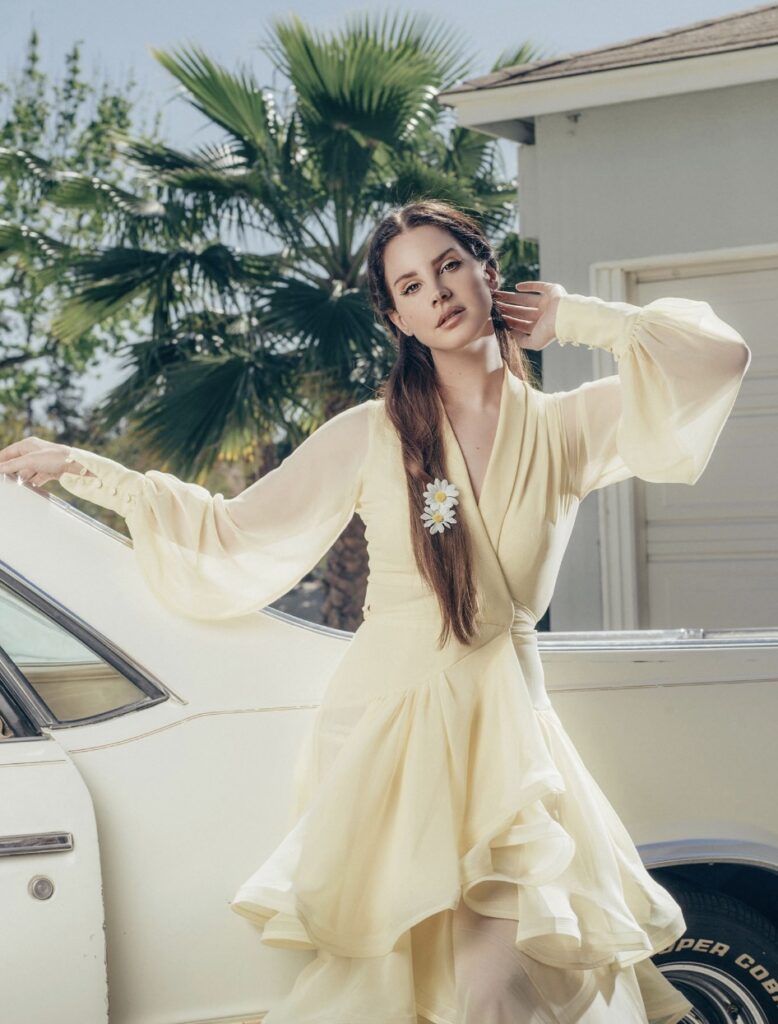The musician Lana Del Rey, has always been in the forefront of my mind when I think about and read The Great Gatsby. Not only because she wrote a song for the film, but because she has always just given me “Gatsby core” vibes.

Lana Del Rey’s song titled, “White Mustang” is a perfect musical and lyrical representation of how I think Daisy was feeling when she began to be suspicious of where all Tom would go out to.
Summer’s meant for lovin’ and leavin’/ I was such a fool for believin’ that you/ could change all the ways you’ve been livin’/ but you just couldn’t stop
Lana Del Rey
The song is about a woman who is at the end of her back and forth relationship with a man. She really likes him but can not fix his ways like she originally thought she would be able to. Still, the girl is so drawn to the way her makes her feel, despite all the flaws.
One major part of the chorus is the repetition of the words, “The day I saw your white mustang.” Although Tom did not own a Mustang, quite frankly because they did not come out until the sixties, he still had the same infatuation with luxury/sports cars. Similarly, Daisy also fell for his psychical appearance and his wealth that he would exude. Just like how Lana Del Rey stated about how she was a fool, Daisy referenced how she wanted her daughter to also be a, “Beautiful little fool” when it came to men.
Daisy also hoped that Tom would change all the way that he was living after they got married. In the book, Jordan told Nick the story of how Daisy did not even want to marry Tom on her wedding day.
When listening to the song, the second chorus of “White Mustang” starts to sound like, “Why am I staying?” When I first heard this years ago, I looked it up—to make sure I was not crazy—and there were many people who heard the same thing and shared their input on it. In my own world of interpretation, I like to think of it as the phenomenon of when you begin to think one thing, but immediately cut yourself off. To me, she is trying to justify her love for this man with her heart, but her head cuts her off and says, “Why am I staying?”
They were careless people, Tom and Daisy- they smashed up things and creatures and then retreated back into their money or their vast carelessness or whatever it was that kept them together, and let other people clean up the mess they had made.
F. Scott Fitzgerald
Towards the end of the song, she calls the man wild, and it correlates to a quote Nick says in the book about the Buchanan’s being careless. In “White Mustang,” part of the reason that she is drawn to him is because of his reckless and wild side, which she also may possess a little bit of herself. In the same way, Daisy has a slight reckless side to her by the way that she cheats on her husband alongside him cheating on her, perhaps it was the thing that kept them together.
